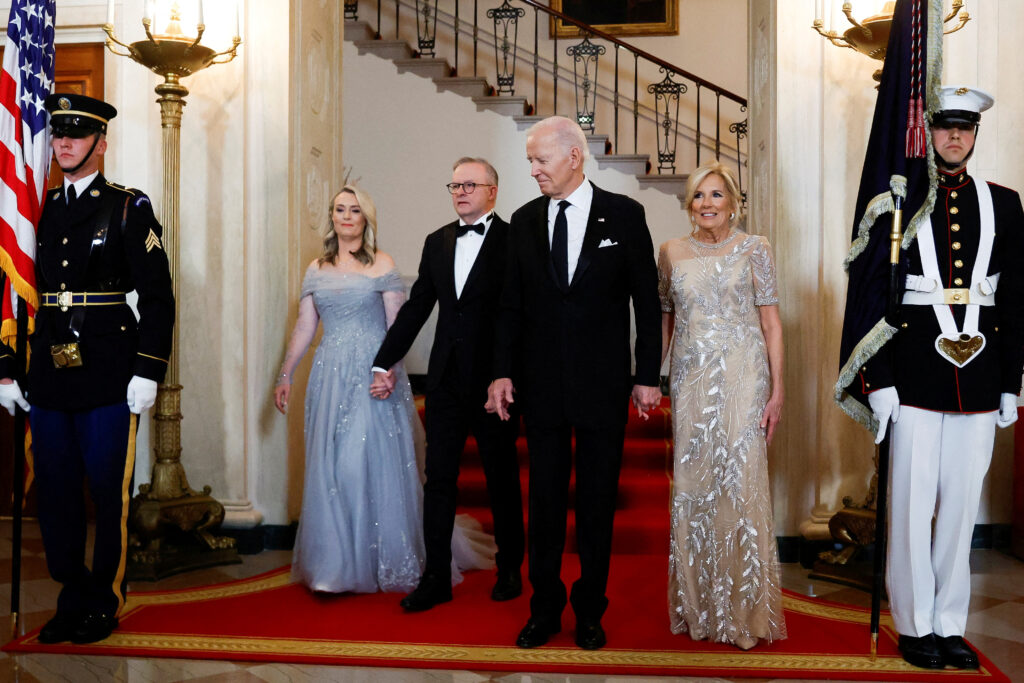Over the last 25 years, Canberra has preferred a strategy of ‘riding two horses’ rather than choosing between its biggest customer, Beijing, and its strongest ally, Washington. Yet Australia has recently changed tack and favoured the US horse to address China’s growing power.
Several prime ministers have explicitly tried to balance Australia’s relationship between the two powers. Kevin Rudd sought ‘true friendship’ with China while also promising to ‘deploy force if everything goes wrong’. His successor, Tony Abbott, quipped that Australia’s engagement with the Indo-Pacific superpowers was driven by ‘fear and greed’. Even John Howard, who invoked the Australia, New Zealand, United States Security Treaty (ANZUS) in the aftermath of the 11 September 2001 terrorist attacks and supported the war on terror, noted Australia can enjoy the benefits of having a relationship with both countries.
But Canberra’s approach has diverged significantly from the previous two decades. While visiting Washington in October 2023, Prime Minister Anthony Albanese expressed his desire to ‘write the next chapter’ in the alliance with the United States. He took a firmer approach during his subsequent trip to Beijing, Albanese remarking that Australia will ‘cooperate with China where we can, disagree where we must and engage in our national interest’.
Albanese has repeatedly demonstrated his preference for the United States by sending a warship through the Taiwan Strait, introducing legislation to facilitate the AUKUS security partnership and signing deals to limit Chinese influence in Tuvalu and Papua New Guinea.
Canberra’s change in tack is driven by the shifting levels of fear and greed that shape Australian strategy. Fear of growing Chinese power prevails in more competitive strategic environments by pushing Canberra closer towards its security patrons. Yet in more permissive environments, greed mutes fear to encourage greater economic engagement with Beijing.
Over the last 25 years, the Indo-Pacific environment has become increasingly competitive. The rise of China has challenged US primacy — the foundation of Indo-Pacific stability since 1945. Australia’s strategy has gradually shifted from greed to fear. Canberra initially embraced China’s economic rise but soon hedged against increasing Chinese assertiveness and, more recently, outright balanced against a seemingly unbridled Beijing.
Canberra’s alignment between the two powers is unlikely to shift again. The nature of the Indo-Pacific environment has stabilised — it will only become more competitive as Beijing continues to rise. China’s GDP is currently 71 per cent of US GDP compared to 11 per cent in 1998 and it is estimated to overtake the United States by 2030. Fear will continue to drive Australian strategy over the long-term and encourage ongoing alignment with Washington.
Canberra lacks a viable alternative for assuaging its fear. Australia cannot secure itself against China. Beijing already enjoys a 34 to 1 advantage in conventional forces. Even if Canberra opted for total mobilisation, Beijing could handily outmatch this effort by leveraging its 11 to 1 GDP and 54 to 1 population advantages. Relying on nuclear deterrence is inherently flawed because Australia is vulnerable to a massive first-strike given 75 per cent of its population resides in seven highly-concentrated clusters.
Aligning with China is also a non-starter. When states bandwagon with threats they invariably trade their foreign policy autonomy for the threat’s ‘protection’, like democratic Finland placating the Soviet Union by remaining neutral throughout the Cold War. Canberra is disinclined towards kowtowing as it maintains that ‘the primary responsibility of the Australian Government is to protect the sovereignty and security of the nation’.
Canberra knows that Beijing would enforce its ‘protection fee’ because previous foreign policy disagreements, such as inquiring about COVID-19’s origins, have triggered harsh consequences. Australians would remain sceptical of Chinese ‘protection’ as most consider Beijing more of a security threat than an economic partner.
Canberra cannot find another security patron either. Only five other like-minded states are significantly stronger than Australia — fellow Quad members, India and Japan, and the three leading European powers, the United Kingdom, France and Germany. Japan and India cannot protect Australia as both are outmatched by China. Meanwhile, the Europeans possess less naval capability than Japan, operate from further afield and have historically proven to be less-than committed Indo-Pacific balancers.
Canberra is too entrenched to switch horses. The US alliance is the cornerstone of Australian defence policy. Without ANZUS, Canberra would need to double its military spending from 1.9 per cent to 4 per cent of GDP and acquire nuclear weapons, in violation of its disarmament principles. Australia is also reliant on US weaponry, particularly the air force, which only operates US combat aircraft.
Even Japan, Australia’s ‘best friend in Asia’ and closest strategic partner, is a US ally. Washington is Canberra’s largest economic partner, with total two-way trade and investment exceeding US$1.6 trillion. The US alliance also enjoys robust public support in Australia with an average favourability of 85 per cent since 1993.
Ultimately, Canberra must choose Washington or Beijing because it cannot ride two horses that are galloping apart. Realist international relations theory would expect states to prioritise security and check the more proximate and aggressive actor. Since federation, Australia has acted accordingly by aligning with its security patron against the leading Indo-Pacific menace. This time is no different.
George Boone is Sessional Academic in foreign policy and international security at the University of Sydney.


Canberra’s fear of its largest trading partner, export market and significant source of trade surplus lacks logic and an appreciation of Chinese culture, philosophy and history.
It is ironic that Canberra can only have a sound relationship with Beijing when China is a poor country. However China has been one of the strongest economies throughout the largest part of human history. China has co-existed with its Asian neighbours in the past thousands of years.